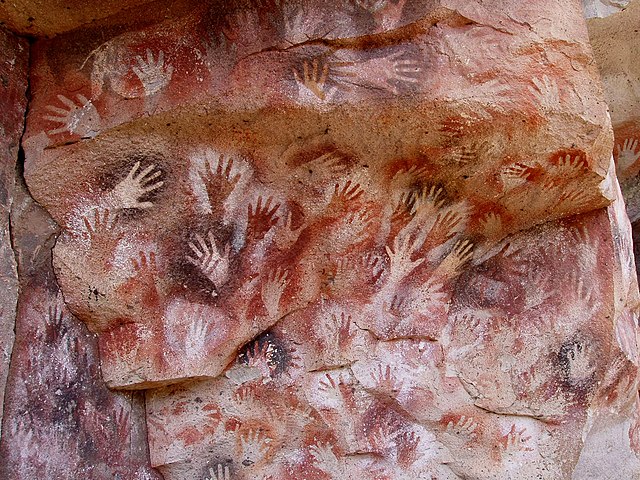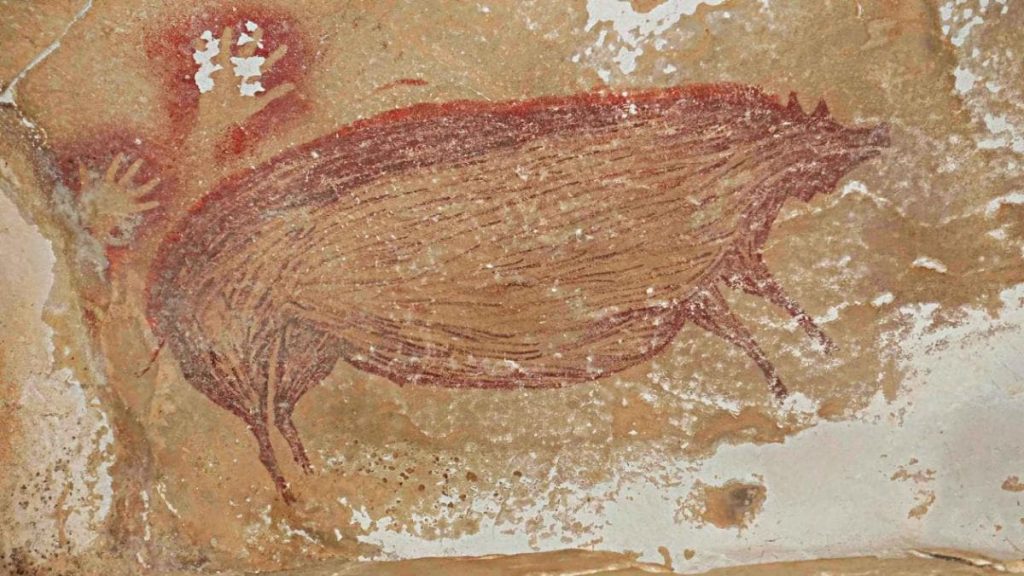“Numerous prehistoric cave paintings have survived in virtually perfect form thanks to factors such as the steady temperature and humidity in caves, the absence of people, and durable painting mediums.”
Imagine exploring the Iberian peninsula in contemporary Spain when you come across a hidden cave entrance. You overcome your fears and turn on your flashlight before stepping into the dark. Unbeknownst to you, the same cave was visited by a prehistoric artist over 60,000 years ago who left one of the first examples of human art there. The scene is exceptionally clear and well-preserved, you note as you shine your spotlight on it from the concealed depth of the cave.
Ancient cave art has been preserved all over the world, from the caverns of Lascaux to newly found paintings on the island of Borneo that are being hailed as the earliest figurative art ever unearthed. The issue is, how could such cave drawings endure for tens of thousands of years when other indications of early civilizations have vanished?
The Evolution of Cave Drawings

The first cave paintings weren’t considered to be Paleolithic when they were initially found at the end of the nineteenth century since they went against accepted theories about early people’s cognitive capacity. Additional research conducted in the 20th century revealed that early humans were more expressive and skilled than previously thought.
Because of a succession of spectacular discoveries in France and Spain, cave paintings have become key windows into the history of Neanderthals and modern man. More than 150 places in just these two countries have provided invaluable historical background. The majority of cave paintings discovered involve symbols and animals; some caves may have hundreds of murals. This portrays some of the fauna that existed at the time these paintings were made, as well as ancient man’s intelligence and symbolic vocabulary.
Lascaux Caves
The earliest known cave paintings date back to the 1940 discovery of the Lascaux Caves, which are about 17,000 years old. The age has been further advanced, nevertheless, by amazing discoveries in Borneo (dating from 40,000 to 52,000 years ago), the Gabardung caves in Australia (at least 28,000 years old), and the Iberian peninsula (64,000 years ago). Every new discovery in the ongoing global search for cave art reveals new details about a past that would otherwise be virtually invisible.
The Characteristics of Cave Paintings

As we all know, nature is the planet’s most softly destructive and productive force. The Grand Canyon and the softly eroded tops of the Appalachian Mountains are examples of this unwavering power. As a result, locating and analyzing the vestiges of ancient civilizations and early people is difficult, if not impossible. Tools, building pieces, artifacts, and relics decay and disappear with time, particularly after tens of thousands of years.
The science behind their adaptability
Cave paintings, on the other hand, have a unique capacity to endure the impacts of time. Initially, the paints and dyes used by these early artists were organic in nature, such as iron or hematite, which would rust and combine to make ochre. This pigment might be mixed with burned bones or charcoal, thickened with animal fat to make a paint, or blended with other natural oils. Due to their rarity, these pigments were definitely valued. It has been hypothesized that these paintings were often ceremonial or holy in character because pigment and paint discoveries were located close to cemeteries and religious locations. Pigments like iron oxide and carbon black (charcoal) are highly resistant to fading, with the exception of when they are subjected to fire or chemicals.

Rainwater seeping is a phenomenon that occurs in certain limestone caves when water seeps through the crevices of the rock to create a bicarbonate layer or coating that essentially glazes the artwork on the wall and preserves their astonishingly vibrant colors thousands of years later.
The most important step in the preservation of these artworks may be the removal of them from their natural surroundings. Caves are reasonably stable settings if they are not subject to structural changes brought on by tectonic movement or volcanic activity. The amount of long-term temperature and humidity variations are maintained to a minimum. These cave drawings have survived without degrading due to the cave being shut off, which has prevented erosion and corrosion from becoming a threat!
The Destructive Characteristics of Finding
The absence of humans is the last factor that has allowed these cave artworks to survive since prehistoric times. It’s likely that some of these caves have remained vacant or undiscovered for decades since a tribe or group abandoned the region and their artistic works behind. As we have observed in several instances, humans are often destructive if we encounter something nice. It reminds me of the over-commercialization of some national parks in the United States, as well as the expensive fees some climbers pay to scale Everest in luxury while leaving their trash for others to pick up.
The aforementioned Lascaux Caves, which at its pinnacle in popularity drew more than 100,000 tourists annually, suffered from precisely this kind of damaging celebrity. The cave was finally shut off because the numerous camera flashes and carbon dioxide exhalations inside the small area were damaging the artwork. Instead, a copy of the cave walls was built. To protect the integrity of this earlier past, several other caverns and archaeologically significant locations have placed similar limitations on visitors.
A Final Word on Ancient cave paintings
Despite being magnificent windows into the past, ancient cave paintings are also delicate works of art that are often damaged. While the cave paintings have survived for millennia due to seclusion from nature (and people) and the durable paints and equipment they were created with, it is crucial that our zeal to study and appreciate these artifacts doesn’t wind up damaging them in the process!
Find out more by engaging Buzzer.lk and Buzzer History.




